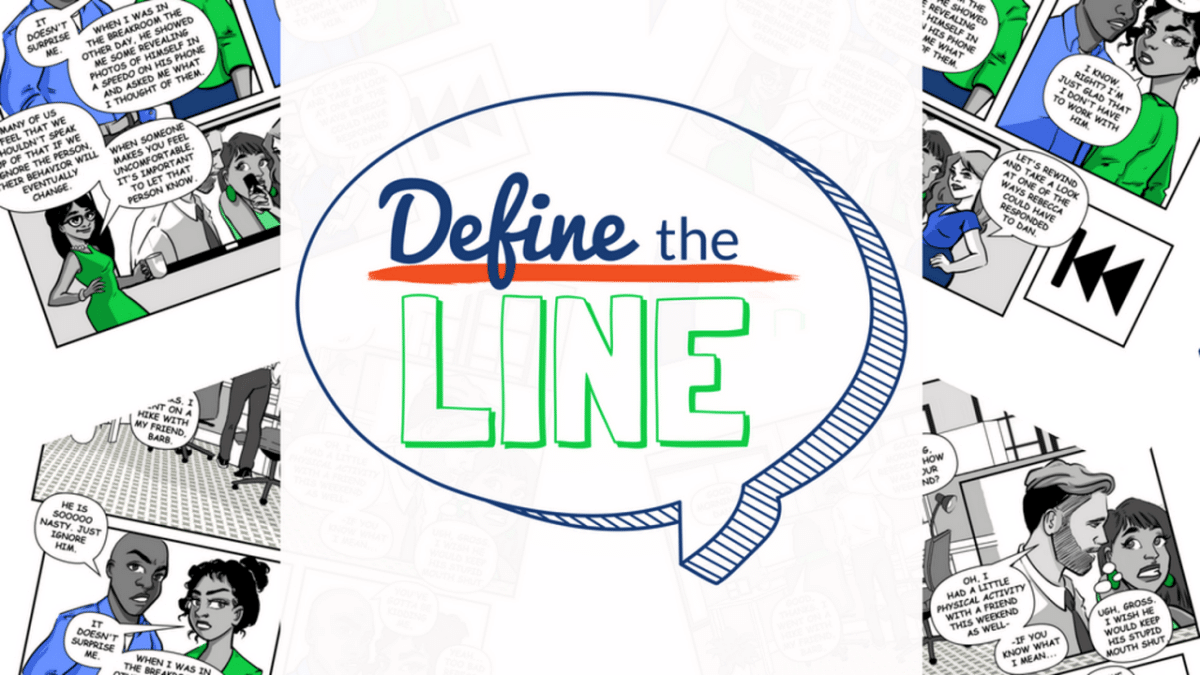Define the Line: Using Pop Culture to Educate Employees on Harassment
I’ll admit it. I’m a fan of pop culture. I read nerdy blogs. I like graphic novels and comic books.
The list goes on…
Last year during Work Human’s #MeToo panel, Civil Rights Activist Tarana Burke said something that really stuck with me. She said (and I’m paraphrasing) that “pop culture can be a powerful educational tool”. The statement was made in the context of teaching young people about civil and human rights using pop culture icons like Oprah.
I totally love this approach and not simply because I’m a pop culture fan. I love it because it makes learning and education participant-centric. Which is how learning is supposed to be.
The reason I’m bringing up pop culture and learning is because I recently purchased a copy of “Define the Line” by Nikki Larchar and Tina Todd. It’s a graphic novel about workplace harassment. I’ve been following this project for a while and am delighted to share it with you.
“Define the Line” is an easy read and well-drawn. It’s also reasonably priced – $15. While I would love to publish the content here, that wouldn’t be cool, so here are a few things you might like to know about it:
It uses very realistic examples of how sexual harassment happens in the workplace. It offers suggestions for how an individual might choose to deal with it. In addition, it offers suggestions to bystanders on how they can support a person who is being harassed. After each scenario, there’s a short fill-in-the-blank section where the reader can document their views about some of the statements made like “Did you get lucky last night?”.
Larchar and Todd are HR pros and I liked how “Define the Line” addresses the “coming to HR” scenario. A reader gets some sense – in advance – of how HR might approach the issue. Hopefully, this will make anyone coming to report an incident to human resources feel comfortable doing so.
“Define the Line” also addresses the inappropriate situations that happen outside of working hours like at happy hour gatherings or in late-night texts from a co-worker. It points out that harassment can take place not only with bosses and co-workers but with clients and vendors. Finally, it addresses retaliation.
I could see a tool like “Define the Line” being used as part of an organizational anti-harassment program. It would be perfect for annual refresher training. And given the format, employees might actually read it.
You might think that using a graphic novel to talk about harassment isn’t appropriate. I disagree. It’s time for us to start using the formats that people might actually enjoy.
Distributing content with a reference to pop culture doesn’t have to mean the point is unprofessional or less important. If we want to get our points across, we’re going to have to learn how to communicate on the receiver’s level in the way that the receiver wants to consume information. Give it a try. Learning doesn’t have to be boring.
24